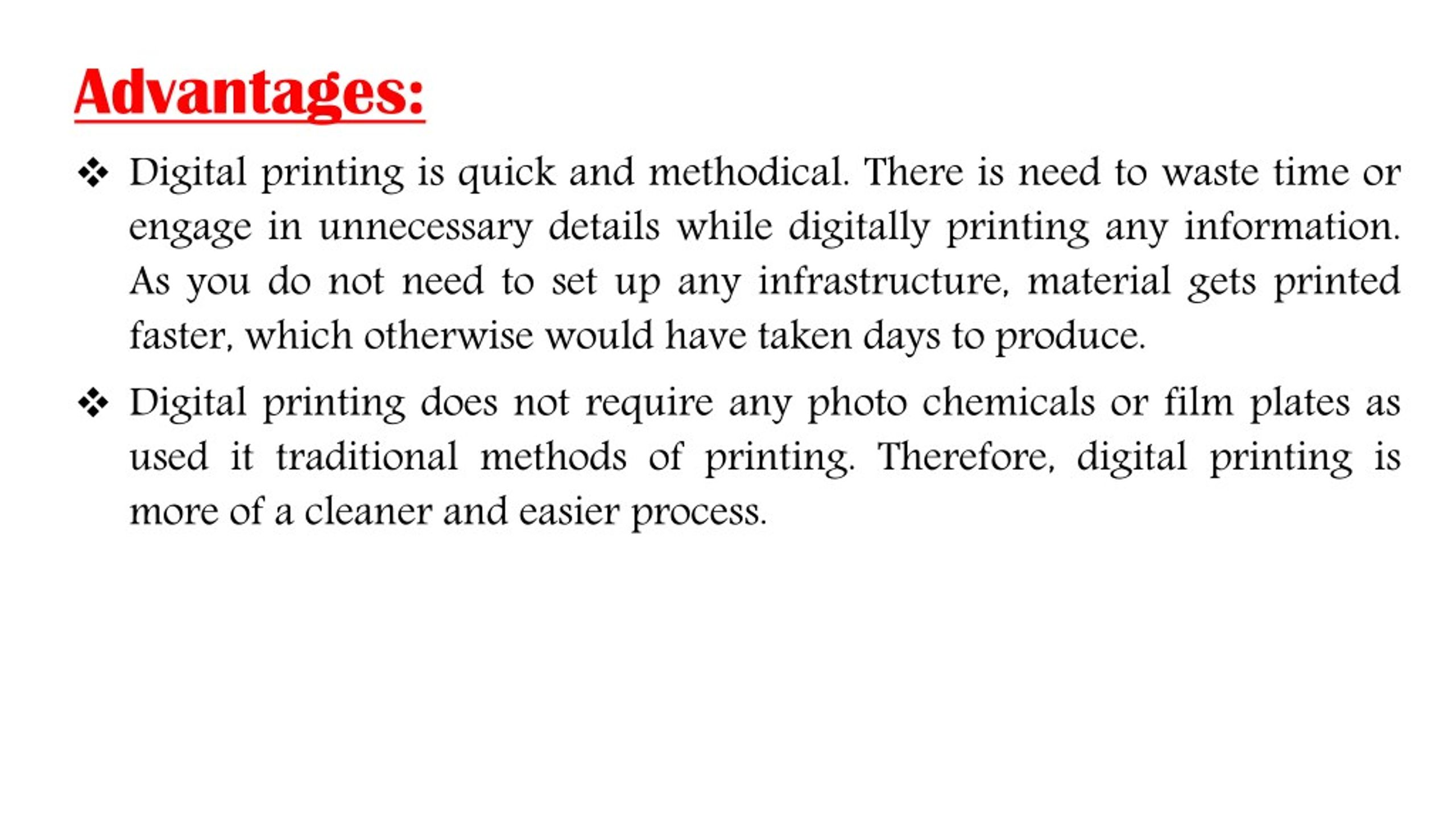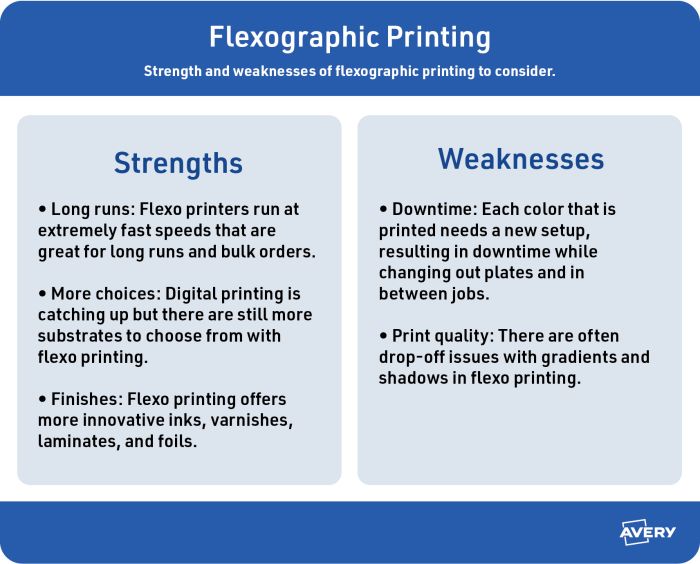All about Digital Printing
Table of ContentsIndicators on Digital Printing You Should KnowThe 4-Minute Rule for Digital PrintingDigital Printing Things To Know Before You Get ThisFacts About Digital Printing RevealedNot known Incorrect Statements About Digital Printing Digital Printing Fundamentals Explained
Variable information printing, such as direct mail with individualized codes and addresses, is preferably fit for digital printing. Digital quick printing just requires four actions of style, evaluation, printing and binding to get every little thing done. Digital fast printing has an unparalleled advantage: print on need.According to PMMI, digital printing enables brand names and manufacturers to react rapidly to customer demands while improving the supply chain, lowering warehousing price and waste, and enjoying faster time to market. That all sounds terrific, however just how does this innovation do all that? The significant differentiator of these modern technologies is that there are no set-up charges and no plates with digital printing.
4 Simple Techniques For Digital Printing
According to Wikipedia, the biggest distinction in between digital printing and typical methods such as lithography, flexography, gravure, or letterpress - Digital Printing is that there is no demand to replace printing plates in electronic printing, whereas in these analog printing approaches home plates are consistently changed. This results in quicker turn-around time and decreases cost when using electronic printing.
Fast production implies getting your product to market faster. It also indicates it's less complicated and faster to make changes later, when you transform a recipe, include a SKU, or create seasonal packaging. Digital printing is extremely adaptable, so it's simple to make modifications to the plan layout rapidly. Everything returns to the plates.
With conventional printing techniques, short-run printing is simply not feasible. Because an excellent layout can make or break your product, digital printing continually develops top quality, clear and vivid graphics each time.
Digital printing is the process of printing digital-based images directly onto a variety of media substratums. There is no need for a printing plate, unlike with countered printing. Digital documents such as PDFs or desktop computer publishing documents can be sent straight to the digital printing press to print on paper, picture paper, canvas, textile, synthetics, cardstock and other substrates.
The Greatest Guide To Digital Printing
According to PMMI, digital printing permits brands and makers to react promptly to client needs while improving the supply chain, reducing warehousing expense and waste, and appreciating faster time to market. That all sounds great, but how does this technology do all that? The significant differentiator of these modern technologies is that there are no set-up fees and no plates with electronic printing.
According to Wikipedia, the best difference in between electronic printing and conventional techniques such as lithography, flexography, gravure, or letterpress is that there is no requirement to replace printing plates in electronic printing, whereas in these analog printing approaches home plates are repetitively changed. This leads to quicker turn-around time and lowers you could look here expense when utilizing electronic printing.

Digital Printing - An Overview
Extra supply can mean even more waste in the future. With conventional printing techniques, short-run printing is simply not possible. Due to the fact that a great layout can make or damage your item, electronic printing continually produces high-grade, clear and vivid graphics each time. Digital printing on adaptable bags adds the bright, dynamic, and specific graphics that virtually bid consumers to reach out and touch them.

According to PMMI, digital printing allows brands and makers to respond quickly to customer demands while boosting the supply chain, reducing warehousing price and waste, and appreciating faster time to market. That all audios fantastic, but how does this modern technology do all that? The major differentiator of these technologies is that there are no set up fees and no plates with digital printing.
Indicators on Digital Printing You Need To Know
According to Wikipedia, the best distinction between digital printing and typical methods such as lithography, flexography, gravure, or letterpress is that there is no need to replace printing plates in digital printing, whereas in these analog printing techniques home plates are consistently replaced. This leads to quicker turn-around time and decreases price when utilizing electronic printing.
Digital printing is highly flexible, so it's easy to make changes to the package layout quickly. It all goes back to the plates.

How Digital Printing can Save You Time, Stress, and Money.
Digital printing is the process of printing digital-based images directly onto a selection of media substratums. There is no need for a printing plate, unlike with countered printing. Digital documents such as PDFs or desktop computer publishing files can be sent directly to the digital printing machine to publish on paper, photo paper, canvas, textile, synthetics, cardstock and other substratums.